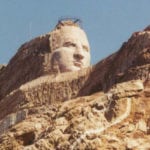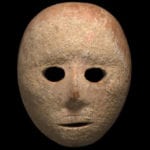 Our World
Our World  Our World
Our World  Movies and TV
Movies and TV The 10 Coolest Stars to Set Sail on The Love Boat
 History
History 10 Things You Didn’t Know About the American National Anthem
 Technology
Technology Top 10 Everyday Tech Buzzwords That Hide a Darker Past
 Humans
Humans 10 Everyday Human Behaviors That Are Actually Survival Instincts
 Animals
Animals 10 Animals That Humiliated and Harmed Historical Leaders
 History
History 10 Most Influential Protests in Modern History
 Creepy
Creepy 10 More Representations of Death from Myth, Legend, and Folktale
 Technology
Technology 10 Scientific Breakthroughs of 2025 That’ll Change Everything
 Our World
Our World 10 Ways Icelandic Culture Makes Other Countries Look Boring
 Our World
Our World 10 Ways Your Christmas Tree Is More Lit Than You Think
 Movies and TV
Movies and TV The 10 Coolest Stars to Set Sail on The Love Boat
 History
History 10 Things You Didn’t Know About the American National Anthem
Who's Behind Listverse?

Jamie Frater
Head Editor
Jamie founded Listverse due to an insatiable desire to share fascinating, obscure, and bizarre facts. He has been a guest speaker on numerous national radio and television stations and is a five time published author.
More About Us Technology
Technology Top 10 Everyday Tech Buzzwords That Hide a Darker Past
 Humans
Humans 10 Everyday Human Behaviors That Are Actually Survival Instincts
 Animals
Animals 10 Animals That Humiliated and Harmed Historical Leaders
 History
History 10 Most Influential Protests in Modern History
 Creepy
Creepy 10 More Representations of Death from Myth, Legend, and Folktale
 Technology
Technology 10 Scientific Breakthroughs of 2025 That’ll Change Everything
 Our World
Our World 10 Ways Icelandic Culture Makes Other Countries Look Boring
10 Secrets Surrendered By Burial Grounds
It’s often been said that history is written by the winners, and sometimes, unraveling the truth about our past is tricky business. Literally digging into the past can find out some truly astonishing things: The excavation of burial grounds, tombs, and chambers can shed some amazing light on the secrets of our ancestors, and remind us of our own ultimate fate at the same time.
10 Stonehenge
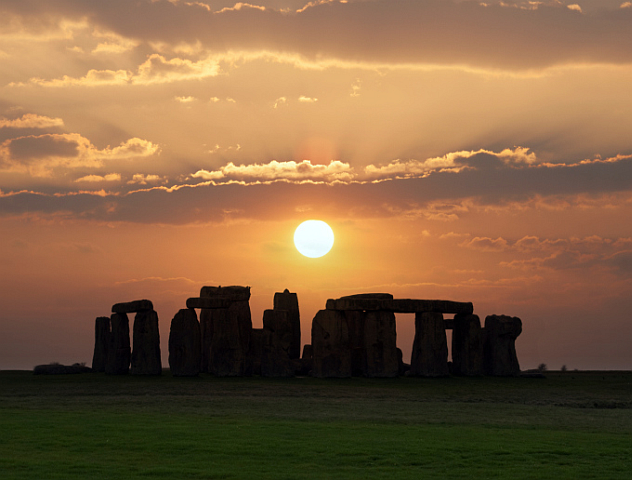
Stonehenge has long been one of the wonders of the world. Very, very slowly, modern technology is helping to unlock its secrets. Recently, news was released of a massive complex discovered in the acres around Stonehenge. Long thought to be a sacred, stand-alone monument (part religious relic, part burial ground, and part astrological mystery), it’s now been found that this view is completely wrong. Ground-penetrating radar has allowed archaeologists to map a massive temple complex that sprawled over the English countryside thousands of years ago, and it included an enormous, 3-kilometer-long (1.8 mi) monument dubbed Cursus, older than Stonehenge and aligned with the midsummer’s Sun.
There are also remnants of a building that seem to support the idea that Stonehenge was used for rituals that evolved around the care and burial of the dead. A massive burial mound has been found to contain a timber building covered with chalk that researchers say had a rather dark purpose. It’s thought to be something of a prep room, where bodies would have their flesh removed in preparation for their burials. Buried under the English countryside are another 17 monuments that include stone circles bigger than Stonehenge. Durrington Walls is being called a superhenge, and consists of at least 70 standing stones. The findings shattered the idea that Stonehenge was a solitary monument, special in its exclusiveness; researchers also found a number of drinking vessels left strewn around the site, seeming to confirm that it was as much a place of celebration and festivals as it was of burial.
9 South American Hallucinogens

Today, drugs have a powerful stigma attached to them, but that wasn’t always the case. Recent findings of early drug use go back to ancient South American societies that predate the Incas. The Tiwanaku, who lived in Chile around A.D. 1000, have been found as frequent partakers in a number of hallucinogenic substances. In 2008, researchers discovered 32 bodies in the Atacama Desert; the bodies provided a unique look into the lives of the Tiwanaku, as they had been mummified naturally rather than being prepped and preserved.
Hair samples taken from the mummies were tested to reveal a chemical compound called harmine; in itself, it’s an anti-depressant, but it’s also known to make the benefits of hallucinogens much more powerful. Babies have also been found to have the same traces, and it’s thought that the drug was passed to the infant through the mother. Another mummy was found buried with a snuff tray—the same mummy also showed significant damage to his nose. While it’s not known how much of their drug use was religious, ceremonial, or recreational, it’s undeniable that it was a huge part of their culture.
Other excavations have discovered snuff trays similar to the one buried with this mummy, and they’ve also found remnants of powder made from vilca tree seeds. The find also has other implications beyond the idea of ritual drug use: Harmine is only found in vines along the Amazon rain forest, hundreds of miles from where traces were found in the Tiwanaku mummies. This suggests not only contact between peoples, societies, and cultures, but also an established trade network.
8 Ancient Tattoos

We’ve talked a little bit about the long history of tattoos, with the 5,000-year-old body of Otzi and his tattoos. He’s far from a lone case though, and the ancient custom of tattooing is practiced nearly worldwide today. A mummy removed from her final resting place in Egypt and subjected to the probing scans of the British Museum has revealed something deeply personal and shockingly modern—a tattoo on her inner thigh, a depiction of the Archangel Michael. The tattoo consists of the Greek letters M I X A H A, for “Michael,” and while it’s a common symbol that’s been found in ancient architecture and writings from the time, finding the Greek symbol as an Egyptian tattoo is wildly different. Otzi’s tattoos are pretty simplistic; most them are simple lines, giving scientists the impression that they might have had something to do with acupuncture. But other findings have revealed that the idea of turning complex, beautiful drawings into body art isn’t a new idea.
The mummified skin of the so-called Ukok Princess of Siberia still shows, very clearly, the dark, intricate, and extensive tattoos that cover her arms and hands. It’s not known for sure what her social standing was, although the scientists working with her had given her the name Devochka, which means simply “girl” (and is much more accurate than the media-sensationalized “Ukok Princess”). Two men were also found buried with her, and they, too, are covered with the same elaborately done tattoos. The men are even more heavily tattooed, with artwork still preserved on the mummified skin of their arms, legs, shoulders, and backs. The girl and her warrior guardians are part of the Pazyryk tribe, and scientists say that their tattoos aren’t uncommon. The more tattoos a person had, the higher their status among their people, but they were also used as identification. Different people were identified with different animals, and it was thought that the presence of tattoos would make it easier to find loved ones in the afterlife. Many Pazyryk mummies have tattoos, and according to researchers, the first place that was tattooed was the left shoulder.
7 Tuam Children’s Graves
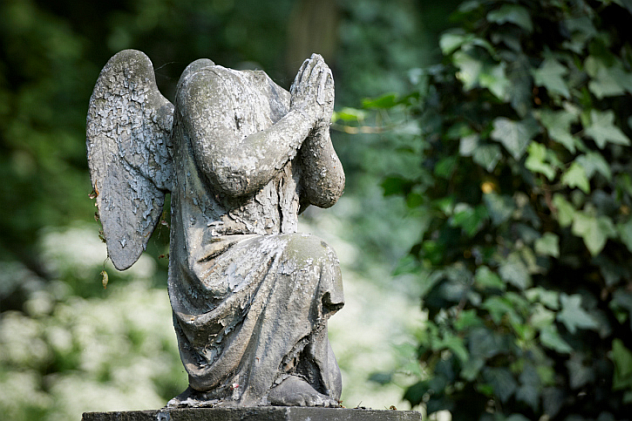
In 1975, two boys were playing in the garden of the St. Mary’s Mother and Baby Home in Tuam, County Galway, Ireland. They made a horrifying discovery that wouldn’t be brought to the nation’s attention for almost 30 years: a pile of skeletons, sealed in small, makeshift tomb that had been covered with a concrete slab. The skeletons belonged to children, but how many children is not known, as the tomb was sealed before an investigation could be started. Prayers were said over the bodies, and it might have been forgotten. Until the 1990s, the devoutly religious nation looked on unwed mothers with a massive stigma. Many were shipped off to mother and baby homes like the one in Tuam, where mothers were put to work to atone for their sins, and the children were taken away from them to be adopted into other families.
It’s recent enough history to be remembered by the mothers who went through the homes and the children who grew up in them, but it was only with the determined research of amateur historian Catherine Corless that even more tragedy was uncovered. When Corless asked for the death records from the Tuam home, she found that there were nearly 800 names on the list—and only one could be accounted for, having been returned to his family and buried properly. As for the rest, Corless believes that the little skeletons found in a back garden in 1975 are just the beginning. In the back corner of the garden is a septic tank, and it’s there, she theorizes, the remains of 796 children were unceremoniously discarded after dying from illnesses like whooping cough and measles.
Bizarrely, it took the media almost eight months to pay any attention to the findings, and Corless faced a strange, massive reaction based in the idea that what was buried should stay buried. Finally, the media put her findings in the national and international spotlight, and it was only then that the Catholic Church, responsible for running the mother and baby homes, looked to their own internal workings and policies with the first eye to launching inquiries into what actually happened to the hundreds and hundreds of children.
6 Vampire Graves And Tuberculosis
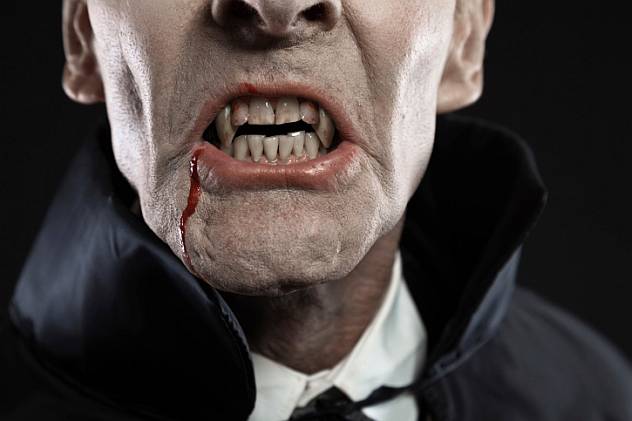
Vampires have long been a part of world mythology, and a grave excavated in 1990 has uncovered new proof on just how the myth of the vampire came to spread throughout cities and small towns indiscriminately. Well after the fear of witches had come and gone in towns throughout New England, a new fear gripped citizens: the fear of the vampire. Children playing in a gravel mine in 1990 stumbled across bones that had worked their way to the surface, and local authorities started to excavate the area. They found human remains dating to the early 1800s, with one of the skeletons in particular standing out. Dubbed “JB” for initials found on the lid of the coffin, the skeleton had been beheaded and the head placed rather ceremoniously on his lap. It’s long been believed that beheading a vampire will slow the creature down, as it can’t go hunting until it finds its head. The beheading—along with other damage to the skeleton—happened about five years after he had originally been buried, which is consistent with the idea that he was dug up and mutilated to stop preying on villagers who fell sick after his death.
Further research tied together other burial sites across New England that had been similarly desecrated, and it was all during a period that coincided with an outbreak of tuberculosis. A medical exam of JB confirmed that he had died of tuberculosis, which explained why he had been targeted as a vampire. He was most likely one of the first victims of an outbreak, and remembered as slowly growing paler and paler, wasting away before he died. Symptoms of tuberculosis—sunken eyes, pale skin and coughing blood—are eerily similar to the identifying characteristics of a vampire; once others started falling ill with the same sickness, it’s absolutely reasonable that desperate and superstitious villagers would think of the earliest victims as monsters hunting their friends, family, and neighbors.
5 We’ve Been Leaving Flowers With Our Dead For Millennia
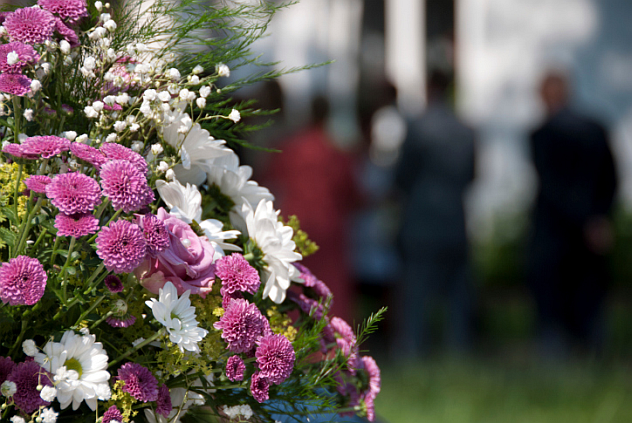
At some point, we began regarding our dead with respect, preparing them in whatever way our culture deems proper for a respectful burial and a final farewell. Chances are, you’ve never really thought twice about the idea of flowers for the dead, and it turns out that it’s a pretty ancient concept. We’ve never really known where it started, but the recent excavation of a burial site in Israel suggests that we’ve been doing it for about 11,700 to 13,700 years. Tracing the use of flowers in burials has been difficult because of their tendency to rot away, but four burial sites belonging to members of the Natufian culture of the Middle East have left some pretty clear giveaways. Beneath the bodies of the dead were clear marks that indicate a bed of flowers was first prepared for the bodies; marks have been identified as native plants like sage and mint, all with distinctive shapes that can be tied to hollows and indentations in the bottom of the grave. The strongest evidence came from the grave containing two bodies, which had also been buried with a number of stone tools. The rather surprising find is one that ties us together with our ancient ancestors, who mourned their dead with offerings of the same flowers we give today.
4 The Gladiator Code Of Conduct

We’ve all seen the movies, where gladiators fight to the death in the Colosseum; either they’re saved by the cheering crowd or condemned to die a bloody death by the emperor. The discovery of a gladiator cemetery in Ephesus, Turkey has unlocked some secrets about the code of conduct that governed gladiator fights, along with how most of them died. When researchers excavated the burial ground, identified as the final resting place of gladiators by the stone carvings that decorate it, the remains of 67 individuals between 20 and 30 years old were found. Many showed signs not only of healed wounds, but of wounds that had been carefully cared for—suggesting that they had only the best of health care for the day.
The blows that ultimately caused their deaths revealed a telling pattern. Some of the bodies show death blows consistent with a sword being passed down the throat and to the heart; researchers believe that it’s those warriors that were condemned to death on the gladiatorial floor. Other killing blows have been found to be made by a hammer, suggesting that those with injuries too grievous to heal (but who didn’t have their deaths ordered by spectators) were humanely put out of their misery by a single killing blow to the head. In the case of the gladiators, the wounds that were missing were just as telling as the wounds that were there. There were no signs of massive scores of injuries inflicted on the same body at the same time, confirming the idea that massive melees weren’t really a common thing. Also missing were blows to the back of the head, indicating that there was something of a code of honor to fights that are often depicted as a bloody free-for-all. Sneaky blows from behind weren’t done, alluding to a much more civilized contest of fighting than we tend to think of.
3 Iron Age Battle Practices
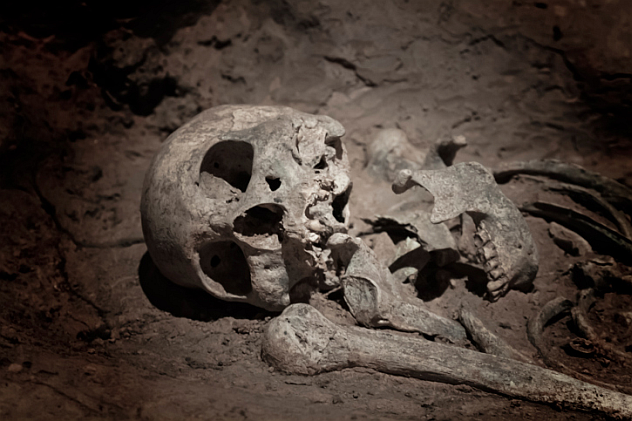
For a long time, the only thing we had to base our ideas of Northern European battle rituals on were texts written by the Romans. Works by the historian Tacticus dating to between A.D. 56 and 120 describe Germanic troops as being brutal people who nailed heads to trees and made piles of the bones of their enemies. While it seems pretty likely that it’s little more than a slander campaign, recent burial grounds have indicated that it was completely and utterly true.
Excavation of a Danish bog near the Alken Enge wetlands has given around 1,000 warriors the chance to surrender their 2,000-year-old secrets. Since it’s too big to excavate the whole thing, archaeologists have settled for concentrating on certain areas of the massive graveyard, and what they found is nothing short of terrifying. Bones that had been left exposed to the elements for months—evidenced by the teeth marks of hungry predators—appear to have been thrown into the area when it was still a lake by the victors returning to the battlefield. Continued excavation has brought to the surface clear signs that the bones were used in some sort of religious ceremony, not unlike the horrors described by Tacticus. Sticks threaded with human bones have been uncovered, and many of the bones show signs of having the flesh stripped from them before they were thrown into the lake. With the bones of the warriors were animal bones, and clay pots that give weight to the argument that it was some sort of ceremony that ended with the bones. Writings long unsubstantiated describing the brutality that Germanic people visited upon the corpses of their fallen rivals have finally, unsettlingly, been discovered.
2 The Murder Of The Unnamed Indentured Servant

He was found in the cellar of a house in Maryland. He was about 16 years old when he died, and according to an examination of his skeleton, it had been a hard 16 years. His teeth were cracked and full of cavities, his spine and shoulders were permanently bent from carrying loads much too heavy for him. He had ruptured discs and broken bones, including a broken wrist and arm that hadn’t healed and was likely a part of the events that led to his death. The boy’s skeleton was buried in a shallow, uneven grave, dug with part of a milk pan that was thrown in the grave on top of him. Garbage had also been thrown on top of him, and fires had been burned on top of that. Coins found in the grave allowed researchers to date his death to between 1663 and 1680, a partial giveaway to his identity if not to his name. In 1662, the house was sold to an English planter named William Neale and his family, and they had two indentured servants who were never named in the family’s records.
The life of an indentured servant was unquestionably hard, and servants were sometimes worked quite literally to death. Adding to the likelihood that the Neale family covered up the death of their servant—whether accidental or murder—is not just the secret burial, but also the legislature of the time. Families covering up the deaths of their indentured servants were such a problem that in 1661, Virginia passed a law making it illegal to bury servants in a private ceremony. Maryland didn’t follow suit. The nameless skeleton in the makeshift grave, covered with garbage, is a lasting testament to the deep, dark secret carried by the members of the Neale family, who abandoned their home in 1680.
1 The Final Resting Place Of Copernicus

He changed the way we look at our place in the solar system, but when Mikolaj Kopernik died, it was a rather unceremonious affair. The man we know today as Nicolaus Copernicus spent half his life checking and rechecking his theories and his math, coming to the conclusion that everything we thought we knew about the solar system was wrong. It wasn’t a popular idea, and it’s not surprising that his death and burial place wasn’t recorded. In fact, the only mention of Copernicus’s death in the records of Frombork Cathedral (where he served as canon) was the mention of his replacement.
Reluctant to give up on the idea of giving the scientist the recognition and proper burial he deserved, the cathedral’s bishop authorized the excavation of the floor before the altar. More than a dozen skeletons were found, including several young children and one that seemed to be Copernicus. A computer reconstruction was done on the skull in question to see what its owner looked like in life, and the results were staggeringly similar to portraits of Copernicus—right down to an injury to his nose. But DNA tests were thought impossible as Copernicus had no children and his only known relative, an uncle, also had an unknown burial location.
Thanks to one lucky find, however, the skeleton has been confirmed as Copernicus. DNA was found in a single strand of hair recovered from one of his books. A comparison to the DNA found in the teeth of the skeleton has given Copernicus closure that took nearly 500 years.


